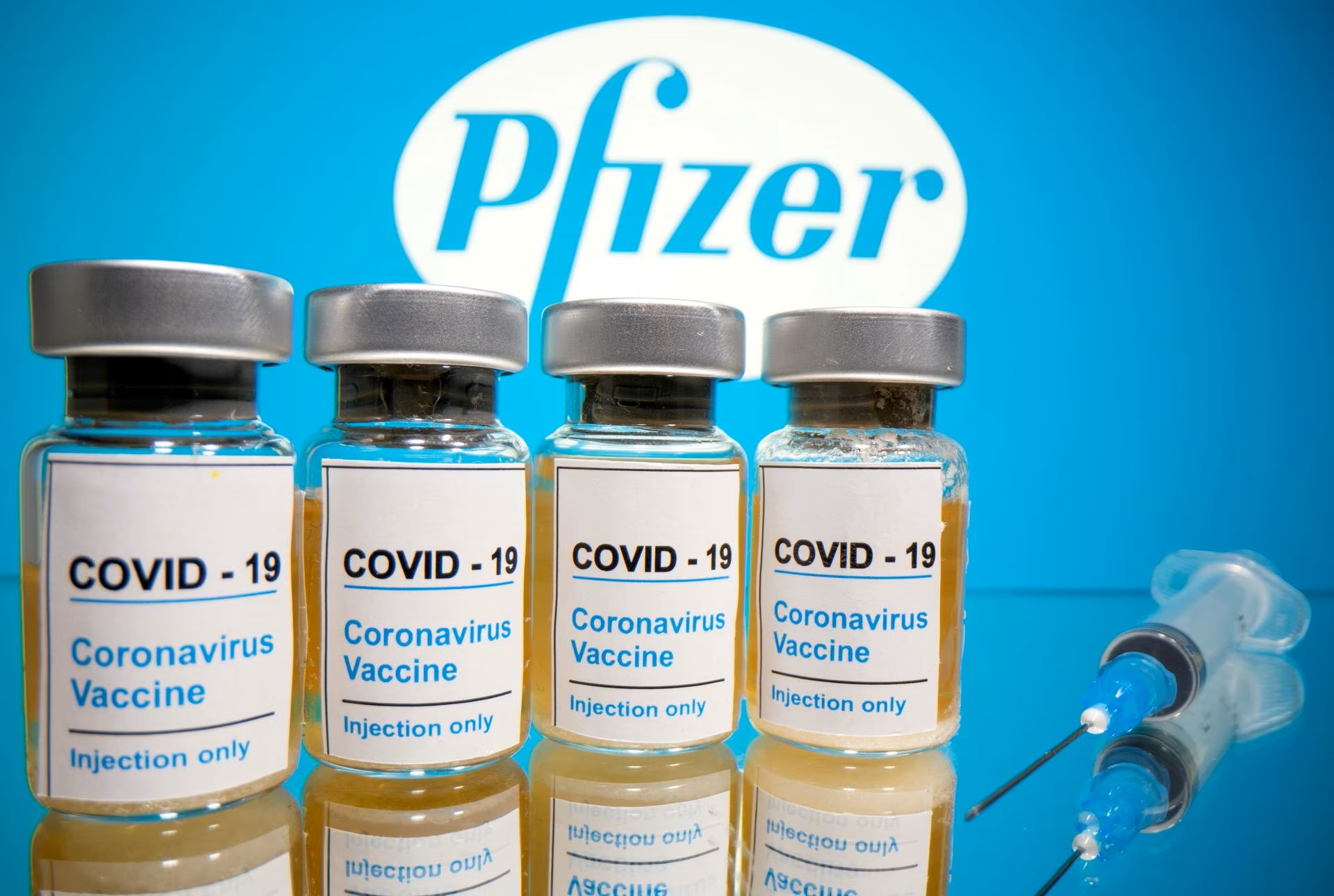CDC identifies possible ‘safety concern’ for certain people receiving COVID vaccines
The CDC says the ‘safety signal’ wasn’t seen in the Moderna COVID-19 vaccine
The Centers for Disease Control and Prevention (CDC) says that a preliminary COVID-19 vaccine “safety signal” has been identified and is investigating whether the Bivalent Pfizer-BioNTech vaccine creates an increased risk of ischemic stroke in people 65 and older.
In the Friday statement, the CDC said that the preliminary signal hasn’t been identified with the Bivalent Moderna COVID-19 vaccine.
“Following the availability and use of the updated (bivalent) COVID-19 vaccines, CDC’s Vaccine Safety Datalink (VSD), a near real-time surveillance system, met the statistical criteria to prompt additional investigation into whether there was a safety concern for ischemic stroke in people ages 65 and older who received the Pfizer-BioNTech COVID-19 Vaccine, Bivalent,” the CDC said.
According to the CDC, an ischemic stroke “occurs when blood clots or other particles block the blood vessels to the brain.”
In the statement, the CDC pointed out that a large study of updated bivalent vaccines from Pfizer-BioNTech “using the Centers for Medicare and Medicaid Services database revealed no increased risk of ischemic stroke.”
The agency also said that the Vaccine Adverse Event Reporting System (VAERS) managed by CDC and FDA has not seen an increase in reporting of ischemic strokes following the updated (bivalent) vaccine.
In a statement to Fox News Digital, a spokesperson for Pfizer said, “Pfizer and BioNTech have been made aware of limited reports of ischemic stroke that have been observed in the CDC Vaccine Safety DataLink (VSD) database in people 65 and older following vaccination with the Omicron BA.4/BA.5-adapted bivalent COVID-19 Vaccine by Pfizer and BioNTech.”
Liesl Eibschutz, a medical student from Dartmouth University, loads a syringe with Pfizer COVID-19 vaccine before giving it to people on the first day that people ages 16 and up can receive the vaccine at Kedren Health in Los Angeles on April 15, 2021. ( Allen J. Schaben / Los Angeles Times via Getty Images)
“Neither Pfizer and BioNTech nor the CDC or the U.S. Food and Drug Administration (FDA) have observed similar findings across numerous other monitoring systems in the U.S. and globally and there is no evidence to conclude that ischemic stroke is associated with the use of the companies’ COVID-19 vaccines,” the spokesperson continued.
“Compared to published incidence rates of ischemic stroke in this older population, the companies to date have observed a lower number of reported ischemic strokes following the vaccination with the Omicron BA.4/BA.5-adapted bivalent vaccine. The CDC continues to recommend vaccination with the Pfizer-BioNTech Omicron BA.4/BA.5-adapted bivalent COVID-19 vaccine for all authorized ages and indications.”

This August 2022 photo shows vials of Pfizer’s updated COVID-19 vaccine during production in Kalamazoo, Michigan. (Pfizer via AP)
The CDC isn’t recommending a change in vaccine practice.
Fox News medical contributor Dr. Marc Siegel said that this isn’t “proof” of a link between the vaccine and strokes.
“This is not proof. This is that they see there may be a link here, and they want to investigate it, and they’re trying to be transparent,” he said.
CDC & FDA Identify Preliminary COVID-19 Vaccine Safety Signal for Persons Aged 65 Years and Older
source CDC
Transparency and vaccine safety are top priorities for the Centers for Disease Control and Prevention (CDC) and the Food and Drug Administration (FDA). U.S. government agencies use multiple, complementary safety monitoring systems to help detect possible safety signals for vaccines and other medical countermeasures as early as possible and to facilitate further investigation, as appropriate. Often these safety systems detect signals that could be due to factors other than the vaccine itself.
All signals require further investigation and confirmation from formal epidemiologic studies. When one system detects a signal, the other safety monitoring systems are checked to validate whether the signal represents an actual concern with the vaccine or if it can be determined to be of no clinical relevance.
Following the availability and use of the updated (bivalent) COVID-19 vaccines, CDC’s Vaccine Safety Datalink (VSD), a near real-time surveillance system, met the statistical criteria to prompt additional investigation into whether there was a safety concern for ischemic stroke in people ages 65 and older who received the Pfizer-BioNTech COVID-19 Vaccine, Bivalent. Rapid-response investigation of the signal in the VSD raised a question of whether people 65 and older who have received the Pfizer-BioNTech COVID-19 Vaccine, Bivalent were more likely to have an ischemic stroke in the 21 days following vaccination compared with days 22-42 following vaccination.
This preliminary signal has not been identified with the Moderna COVID-19 Vaccine, Bivalent. There also may be other confounding factors contributing to the signal identified in the VSD that merit further investigation. Furthermore, it is important to note that, to date, no other safety systems have shown a similar signal and multiple subsequent analyses have not validated this signal:
- A large study of updated (bivalent) vaccines (from Pfizer-BioNTech and Moderna) using the Centers for Medicare and Medicaid Services database revealed no increased risk of ischemic stroke
- A preliminary study using the Veterans Affairs database did not indicate an increased risk of ischemic stroke following an updated (bivalent) vaccine
- The Vaccine Adverse Event Reporting System (VAERS) managed by CDC and FDA has not seen an increase in reporting of ischemic strokes following the updated (bivalent) vaccine
- Pfizer-BioNTech’s global safety database has not indicated a signal for ischemic stroke with the updated (bivalent) vaccine
- Other countries have not observed an increased risk for ischemic stroke with updated (bivalent) vaccines
Although the totality of the data currently suggests that it is very unlikely that the signal in VSD represents a true clinical risk, we believe it is important to share this information with the public, as we have in the past, when one of our safety monitoring systems detects a signal. CDC and FDA will continue to evaluate additional data from these and other vaccine safety systems. These data and additional analyses will be discussed at the upcoming January 26 meeting of the FDA’s Vaccines and Related Biological Products Advisory Committee.
No change in vaccination practice is recommended. CDC continues to recommend that everyone ages 6 months of age and older stay up-to-date with COVID-19 vaccination; this includes individuals who are currently eligible to receive an updated (bivalent) vaccine. Staying up-to-date with vaccines is the most effective tool we have for reducing death, hospitalization, and severe disease from COVID-19, as has now been demonstrated in multiple studies conducted in the United States and other countries:
- Data have shown an updated COVID-19 vaccine reduces the risk of hospitalization from COVID-19 by nearly 3-fold compared to those who were previously vaccinated but have not yet received the updated vaccine.
- Data have shown that the updated COVID-19 vaccine also reduces the risk of death from COVID-19 by nearly 19-fold compared to those who are unvaccinated.
- Other preliminary data from outside the U.S. have demonstrated more than 80% protection against severe disease and death from the bivalent vaccine compared to those who have not received the bivalent vaccine.
Overall safety data for the bivalent COVID-19 vaccines are available here.

